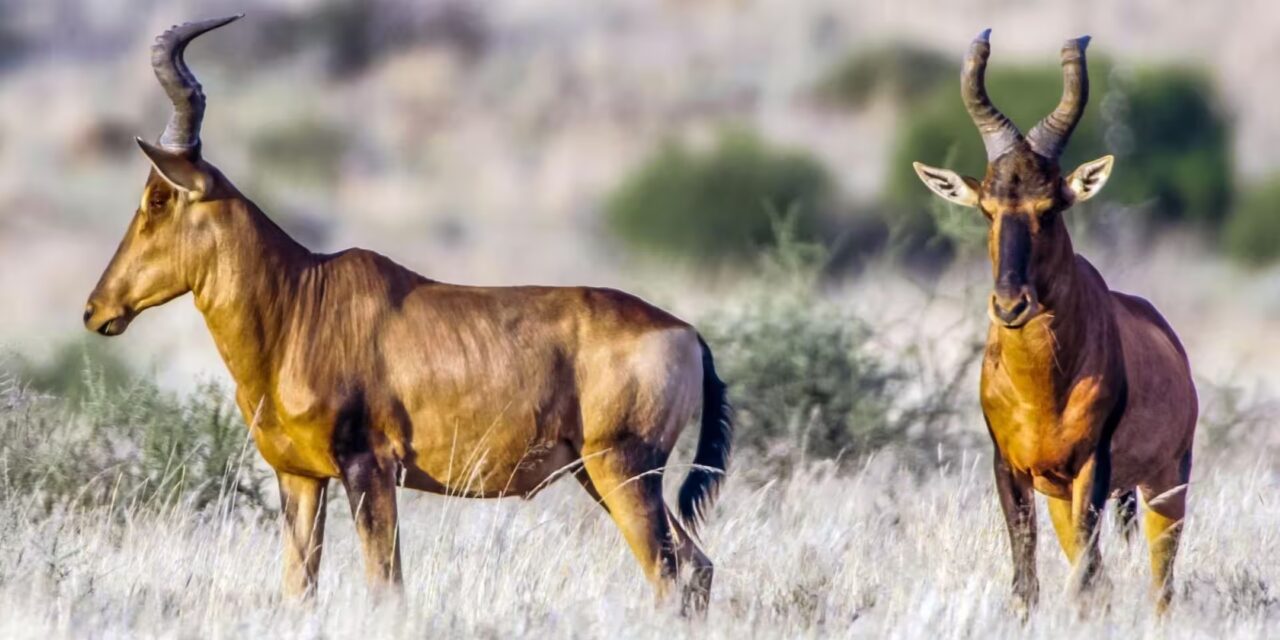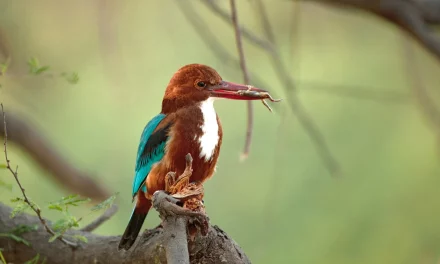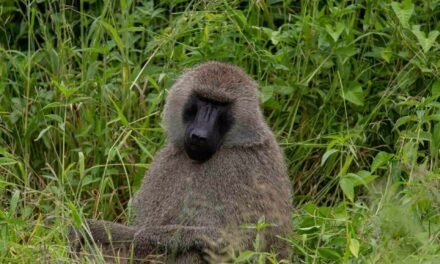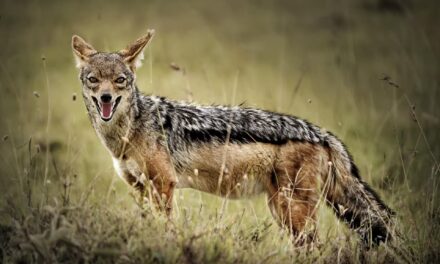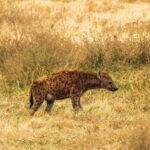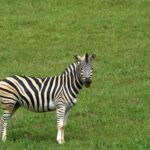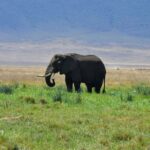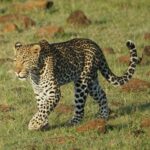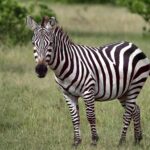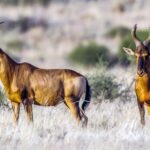Table of Contents
Overview / About the Park
Tsavo East National Park is one of Kenya’s largest and oldest national parks, covering over 13,700 square kilometers of semi-arid wilderness. It lies between Nairobi and Mombasa, forming part of the greater Tsavo ecosystem alongside Tsavo West National Park.
The park is often called the “Theatre of the Wild”, a vast land of red-earth plains, rugged hills, and palm-lined rivers. Famous for its red elephants that dust themselves in the park’s rich soil, Tsavo East offers wide-open scenery and a true sense of untamed Africa.
Wildlife & Nature
Tsavo East is home to incredible biodiversity across its sprawling landscapes:
- Big Five: Lions, elephants, buffaloes, leopards, and rhinos.
- Other Mammals: Giraffes, zebras, lesser kudu, hartebeest, impalas, and hippos.
- Predators: Lions (including the descendants of the famed Man-Eaters of Tsavo), cheetahs, and hyenas.
- Birdlife: Over 500 bird species, including ostriches, eagles, kingfishers, and hornbills.
- Key Landscapes:
- Yatta Plateau – the world’s longest lava flow (about 300 km).
- Galana River – lined with doum palms, attracting elephants and crocodiles.
- Aruba Dam – a popular spot for animal watching and photography.
The park’s dry beauty, golden savannas, and scattered baobabs create a classic East African landscape.
Experiences & Activities
- Game Drives: Morning and evening safaris across wide, open plains with few crowds.
- Birdwatching: Best around water sources and during the green season.
- Lugard Falls: A series of rapids on the Galana River cutting through sculpted rock formations.
- Yatta Plateau: A scenic backdrop for drives and photography.
- Nature Photography: Red elephants, dramatic sunsets, and endless horizons make Tsavo a visual treat.
- Cultural Visits: Trips to nearby communities offer insight into traditional life around the park.
Best Time to Visit
Tsavo East is open year-round, but experiences vary by season:
- Dry Season (June – October, January – February): Best for wildlife viewing; animals gather around waterholes.
- Green Season (November – May): The park turns lush, birdlife flourishes, and fewer visitors mean quieter safaris.
- Temperature: Hot and dry, with daytime highs around 30 – 35°C.
For clear skies and great wildlife photography, the dry season is ideal.
How to Reach & Park Entry
- Location: Between Nairobi and Mombasa, in southeastern Kenya.
- By Road:
- From Nairobi: About 5 – 6 hours (325 km) via the Nairobi–Mombasa Highway.
- From Mombasa: Around 3 hours (160 km) via Buchuma Gate.
- By Air: Charter flights to Voi, Aruba, or Satao airstrips.
- Main Gates: Voi Gate, Buchuma Gate, and Manyani Gate.
- Entry Fees (approximate):
- Non-residents: USD 60 per adult/day
- Residents: KES 1,000 per adult/day
- Children: Half rates
Where to Stay / Camping Options
Tsavo East has a range of lodges and camps spread across its vast terrain:
- Luxury Lodges:
- Satao Camp – classic safari camp overlooking a busy waterhole.
- Ashnil Aruba Lodge – near Aruba Dam with modern comfort and great views.
- Mid-range Options:
- Voi Safari Lodge – perched on a cliff with sweeping plains below.
- Voi Wildlife Lodge – ideal for families and small groups.
- Budget & Camping:
- Public and private campsites at Ndololo and Aruba areas.
- Basic facilities; bring your own camping gear if self-driving.
Travel Tips / Safety Notes
- Always carry plenty of water, Tsavo can be extremely hot and dry.
- A 4×4 vehicle is recommended, especially during or after rain.
- Stay inside vehicles during drives and maintain safe distances from wildlife.
- The park’s size means long distances, plan your routes and fuel stops in advance.
- Early morning and late afternoon are the best times for wildlife sightings.
- Bring insect repellent, sunscreen, and a hat.
Packing List
- Light, breathable clothing in neutral colors
- Wide-brim hat and sunglasses
- Sunscreen and insect repellent
- Binoculars and camera
- Sturdy shoes or boots
- Water bottle and snacks
- Light jacket for early mornings
- Park permit and identification
Visitor Statistics
Tsavo East receives about 150,000 to 200,000 visitors annually, a mix of local and international travelers. Its proximity to the coast makes it a popular add-on for beach safaris from Mombasa or Diani.
Conservation & Responsible Tourism
Tsavo East plays a vital role in protecting one of Kenya’s largest ecosystems.
- Elephant Conservation: Home to thousands of elephants and key corridors linking Tsavo East and West.
- Anti-Poaching Efforts: The Kenya Wildlife Service (KWS) runs strong patrol programs across the park.
- Habitat Restoration: Reforestation and water projects support wildlife in dry seasons.
- Community Involvement: Neighboring communities benefit from tourism revenue and conservation programs.
- Sustainable Travel: Visitors are encouraged to minimize plastic use and respect park rules.
Your visit directly helps sustain wildlife protection and local livelihoods in one of Africa’s most iconic landscapes.

